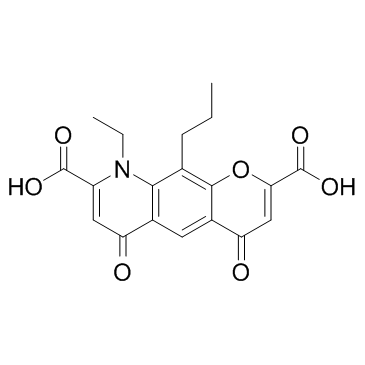Antiallergic cromones inhibit neutrophil recruitment onto vascular endothelium via annexin-A1 mobilization.
Samia Yazid, Giovanna Leoni, Stephen J Getting, Dianne Cooper, Egle Solito, Mauro Perretti, Roderick J Flower
Index: Arterioscler. Thromb. Vasc. Biol. 30(9) , 1718-24, (2010)
Full Text: HTML
Abstract
To determine whether the inhibitory action of the antiallergic cromone "mast cell stabilizing" drugs on polymorphonuclear leukocyte (PMN) trafficking is mediated through an annexin-A1 (Anx-A1) dependent mechanism.Intravital microscopy was used to monitor the actions of cromones in the inflamed microcirculation. Reperfusion injury provoked a dramatic increase in adherent and emigrated leukocytes in the mesenteric vascular bed, associated with augmented tissue levels of myeloperoxidase. Nedocromil, 2 to 20 mg/kg, significantly (P<0.05) inhibited cell adhesion and emigration, as well as myeloperoxidase release, in wild-type but not Anx-A1(-/-) mice. Short pretreatment of human PMNs with nedocromil, 10 nmol/L, inhibited cell adhesion (P<0.05) in the flow chamber assay, and this effect was reversed by specific anti-AnxA1 or a combination of antiformyl peptide receptors 1 and 2, but not irrelevant control, antibodies. Western blotting experiments revealed that cromones stimulate protein kinase C-dependent phosphorylation and release Anx-A1 in human PMNs.We propose a novel mechanism to explain the antiinflammatory actions of cromones on PMN trafficking, an effect that has long puzzled investigators.
Related Compounds
| Structure | Name/CAS No. | Molecular Formula | Articles |
|---|---|---|---|
 |
Nedocromil
CAS:69049-73-6 |
C19H17NO7 |
|
Estrogen inhibits mast cell chymase release to prevent press...
2015-02-01 [Hypertension 65(2) , 328-34, (2015)] |
|
Diagnostic accuracy of the bronchodilator response in childr...
2013-09-01 [J. Allergy Clin. Immunol. 132(3) , 554-559.e5, (2013)] |
|
This asthma treatment has a lasting side effect in children.
2013-09-01 [J. Fam. Pract. 62(9) , 500-2, (2013)] |
|
Corticosteroid use and bone mineral accretion in children wi...
2012-07-01 [J. Allergy Clin. Immunol. 130(1) , 53-60.e4, (2012)] |
|
Chloride transport and the actions of nedocromil sodium and ...
1996-11-01 [J. Allergy Clin. Immunol. 98(5 Pt 2) , S102-5; discussion S105-6, (1996)] |